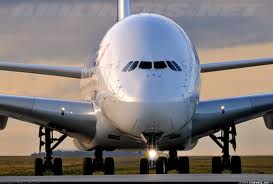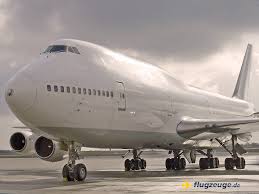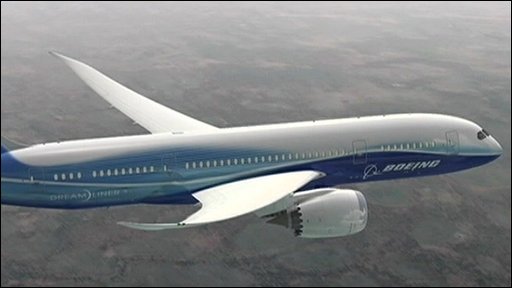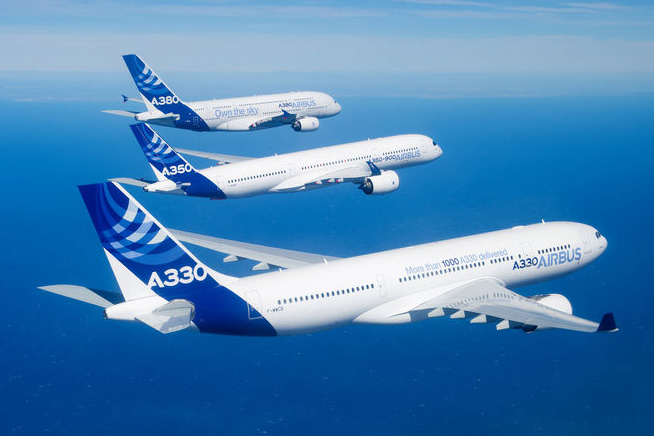For most air travellers, the main concern about flying is comfort, particularly on long-haul flights. Frequently, passengers disembark their flight none the wiser as to the aircraft they’ve flown in. For the enthusiasts however, details about the equipment they’re on is of great importance! With all the aeronautical technologies and advanced engineering of today, the list of aircraft models continue to grow ever-longer. But which types are commonly used by commercial airlines and why should it matter to you?
Here we offer a brief introduction to commercial planes to help you identify the main aircraft you are likely to encounter on your next business or leisure trip. So the next time you book your flight, you’ll know what questions to ask your agent and what to expect on the aircraft you will be travelling on.
Please note however, that airlines always reserve the right to change the equipment of a scheduled flight at any time without notice.
Airbus A380
Manufactured by the Airbus Company, the Airbus A380 is the largest passenger aircraft in the world. The first airlines took delivery of these giants in 2004 with Singapore Airlines’ first commercial flight in 2005. The model is highly preferred because it is a double-decker, which means it can accommodate over 800 passengers (in single economy class accommodation), deeming it a cost-effective option for airline companies particularly on long-haul routes.
Useful facts
Main operators: Air France, British Airways, China Southern Airlines, Emirates, Korean Air, Qantas, Singapore Airlines, Thai Airways
Cabin: 1-class 700 passengers, 3-class 555 passengers

Boeing 747
Commonly known as the ‘Jumbo Jet’ for its immense size or ‘Queen of the Skies’ as the world’s first wide body aircraft, Boeing 747 is a commercial airliner and cargo transport aircraft manufactured by Boeing Commercial Airplanes and is the most iconic jet of the 20th century. It held the passenger capacity record until recently (superseded by the Airbus A380) and has a double deck configuration for half its length which can accommodate over 400 passengers in a three-class system. It’s a flexible aircraft with removable seats when used to transport cargo.
Performing its first flight in 1969, it is the main airplane used for transcontinental routes. Boeing Corporation continues to improve the range and regularly launches upgraded versions. The 747 is the most widespread model of the expansive Boeing family and can transport around 660 passengers.
So the next time you fly a Boeing 747, know that you are flying on a piece of important commercial aviation history that made air travel widely accessible to more people around the world.
Useful facts
Main operators: most commercial airlines operate a Boeing 747 including leading names Air France, Asiana Airlines, British Airways, Cathay Pacific, Delta Airlines, Eva Air, Garuda Indonesia, KLM, Korean Air, Lufthansa, Malaysia Airlines, Philippine Airlines, Qantas, Singapore Airlines, Thai Airways, United Airlines, and Virgin Atlantic.
Cabin: 1-class 660 passengers, 2-class 524 passengers, 3-class 416 passengers


Dreamliner
What is commonly known as the Dreamliner is the Boeing 787. Its ground-breaking launch in 2009 introduced into commercial air travel a fuel-efficient airliner and the world’s only aircraft to primarily use composite materials in its construction, making it more economic and energy-saving than its similar-sized cousins.
It claims to enhance the passenger experience by installing bigger windows (four-panel windshield) and using noise-reduction techniques for the engine. The interiors are classic, the innovative air-conditioning always keep temperatures ideal (no more blowing hot and cold mid-flight!), the LED lighting pleasant and seats suitably comfortable.
Useful facts
Main operators: Air India, All Nippon Airways, China Southern Airlines, Ethiopian Airlines, Japan Airlines, LAN Airlines, LOT Polish Airlines, Qatar Airways, Thomson Airways, United Airlines.
Cabin: 2-class 317 passengers, 3-class up to 280 passengers


Airbus A330
The Airbus A330 was launched as a twin-engined sister to the four-engined Airbus A340 and can also be used as a cargo aircraft. Many operators are now opting to use an A330 due its combination of low operating costs, high efficiency, flexibility and optimised performance.
It currently has one of the finest seating, interiors, facilities and service in the aircraft industry resulting in a high ‘travel tariff’ and hence considered a High Class or Business Class aircraft.
Useful facts
Main operators: many commercial airlines operate an A330 including Etihad Airways, Finnair, Oman Air, Swiss International Airlines and Turkish Airlines.
Cabin: 1-class 440 passengers, 2-class 335 passengers, 3-class 295 passengers














PLEASE LEAVE YOUR REVIEW...